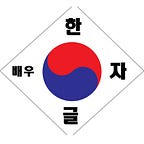Why King Sejong the Great was a Savior for Koreans (and learners too)
King Sejong the Great wasn’t called great for nothing. He was a savior to Koreans, a leader who brought reforms for the common people. But arguably the most important product of his rule was the Korean alphabet, Hangul.
Born in 1397 and died in 1450, his reign is often called the Golden Age and gets extra points for being the common figurehead of Korean history.
Imagine yourself in 1400s Korea (then called the Joseon kingdom), an illiterate farmer with a small family. You’re not one of the educated yangbans or scholars who worked for the king. The only writing system is the Chinese Hanzi system adapted for Korean. And then here comes along King Sejong, a hope for the common people. You’re excited to see what he does in his reign.
King Sejong’s policies were for the common people, and his solution for the illiterate ‘common population’ was to create a new writing system: Hangul.
Before Hangul
Either the Idu (Hanzi with special characters for verb endings) or Hyangchal (Hanzi for representing Korean sounds) was used. Gugyeol was also sometimes used, where texts in Classical Chinese were modified for Koreans to understand.
All the systems at that time were complicated and cumbersome, because the structure and pronunciation of Chinese words were so different to Korean.
Illiteracy was a big problem, and many peasants were tricked into signing documents that would give away their land to nobles.
Creating Hangul
King Sejong realised that this problem had to be solved to improve the lives of the common people, so he commissioned a group of scholars to create a phonetic writing system.
Sounds that were made in the same area of the mouth, like b, p and m, looked similar in Hangul, ㅂ, ㅍ and ㅁ. The vowels also represented the position of the mouth, for example ㅗ for o,ㅏ for a, andㅣfor i.
Each syllable was constructed using a consonant, vowel and sometimes a final consonant (batchim). Each letter was written in a ‘block format’ and read clockwise, from top to bottom.
After Hangul
Many scholars and government officials did not like the idea of moving away from the Chinese writing system. This was because both education and the government relied on it.
Despite this, King Sejong still continued to use his Hangul alphabet and translated poems, religious verses and proverbs for the common people.
One of the most well known document by King Sejong was the ‘Hunminjeongeum’ (Proper Sounds for the Instruction of the People), where the Hangul Alphabet was presented to Koreans.
Other Awesome Things King Sejong Did
King Sejong is very famous for his creation of Hangul, but there are many lesser known achievements that he managed to do in his 32-year rule.
- He commissioned many books that documented things like farming, family relations and duties.
- Improved the movable metal type that was invented in 1234 considerably
- Started the development of a musical notation system for Chinese and Korean music, enabling us to read and play Joseon music
- Sponsored numerous scientific inventions, such as the sundial, celestial globes, astronomical maps, the rain gauge and the water clock
- Financially supported young scholars so they could devote their time to study
- Introduced new progressive ideas for the common people, including establishing relief programs for farmers affected by drought or flood
Final Words
All in all, King Sejong was an excellent ruler who was responsible for the development of Hangul, the alphabet Korean still use today, as well as reforms that benefited the people.
It’s clear to say that both learners of the language and Koreans should be grateful for the amazing things this ruler did for Korea and its language.
화이팅! (Korean [Hangul] for Good Luck!)
Luca
